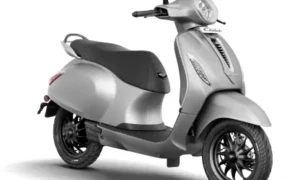In today’s fast-paced urban environments, mobility plays a critical role in shaping the quality of life and sustainability of cities. As urban populations continue to grow and traffic congestion worsens, the need for efficient, sustainable transportation solutions becomes increasingly apparent. In response to these challenges, the concept of urban e-bikes has emerged as a promising solution for the future of urban mobility in Switzerland. This essay explores the rise of urban e-bikes, their advantages, challenges, and the potential they hold for transforming urban transportation.
Understanding E-bikes
E-bikes are bicycles equipped with electric motors that assist riders as they pedal. Unlike traditional bicycles, e-bikes offer varying levels of electric assistance, allowing riders to travel longer distances and tackle challenging terrain with ease. The key components of an e-bike include the electric motor, battery, pedal-assist system, and controller. These features work together to provide a smooth and effortless riding experience, making e-bikes an attractive option for commuters, leisure cyclists, and urban dwellers alike.
The Rise of Urban E-bikes
In recent years, there has been a noticeable increase in the popularity of e-bikes in urban areas across Switzerland. This surge in urban e-bike usage can be attributed to several factors, including growing concerns about traffic congestion, air pollution, and the need for sustainable transportation options. As more people seek alternative modes of transportation to cars and public transit, e-bikes have emerged as a convenient, eco-friendly solution for navigating city streets and commuting to work.
Advantages of Urban E-bikes
Urban e-bikes offer numerous advantages for city dwellers seeking efficient and sustainable transportation options. One of the primary benefits of e-bikes is their ability to alleviate traffic congestion by providing a faster and more flexible alternative to cars. With e-bikes, riders can navigate congested streets, bypass traffic jams, and reach their destinations more quickly, all while reducing their carbon footprint and contributing to cleaner air.
Overcoming Challenges
Despite their many benefits, urban e-bikes also face several challenges that must be addressed to promote their widespread adoption. One of the main challenges is the lack of adequate cycling infrastructure in many urban areas, including bike lanes, parking facilities, and charging stations. Additionally, safety concerns, such as accidents involving e-bikes and conflicts with pedestrians and other road users, pose significant obstacles to their acceptance and integration into urban transportation systems.
Urban E-bike Sharing Programs
Many cities have implemented e-bike sharing programs to address these challenges and promote the use of e-bikes in urban environments. These programs allow users to rent e-bikes for short-term use, providing an affordable and convenient transportation option for urban residents and visitors alike. By expanding access to e-bikes and encouraging more people to try them, e-bike sharing programs play a crucial role in promoting sustainable urban mobility and reducing reliance on cars.
Technological Advancements
Advancements in technology are driving innovation in the field of urban e-bikes, with manufacturers constantly developing new features and improvements to enhance the riding experience. Smart connectivity, improved battery life, and lightweight designs are just a few examples of the technological advancements that are shaping the future of e-bikes. These innovations not only improve the performance and functionality of e-bikes but also contribute to their integration into smart city ecosystems.
Government Support and Policies
Government support and favorable policies are essential for promoting the widespread adoption of urban e-bikes and creating a supportive environment for cycling in cities. Infrastructure development, financial incentives, and regulations that prioritize cycling and pedestrian safety are crucial for building e-bike-friendly cities. By investing in cycling infrastructure and implementing supportive policies, governments can encourage more people to embrace e-bikes as a sustainable and practical mode of transportation.
Future Possibilities
Looking ahead, the future of urban mobility with urban e-bikes holds immense potential for transforming the way we move through cities. With ongoing technological advancements, supportive government policies, and growing public awareness of the benefits of cycling, e-bikes are poised to play a central role in sustainable urban transportation systems. By embracing urban e-bikes and investing in cycling infrastructure, Switzerland can lead the way towards a greener, healthier, and more accessible future for urban mobility.
Conclusion
In conclusion, the future of urban mobility with urban e-bikes is bright and promising. As cities grapple with the challenges of traffic congestion, air pollution, and limited space, e-bikes offer a practical, sustainable solution for navigating urban environments. By leveraging technological innovations, promoting e-bike sharing programs, and implementing supportive government policies, Switzerland can embrace urban e-bikes as a key component of its transportation infrastructure. With continued investment and commitment to promoting cycling, e-bikes have the potential to revolutionize urban mobility and create healthier, more livable cities for future generations.

